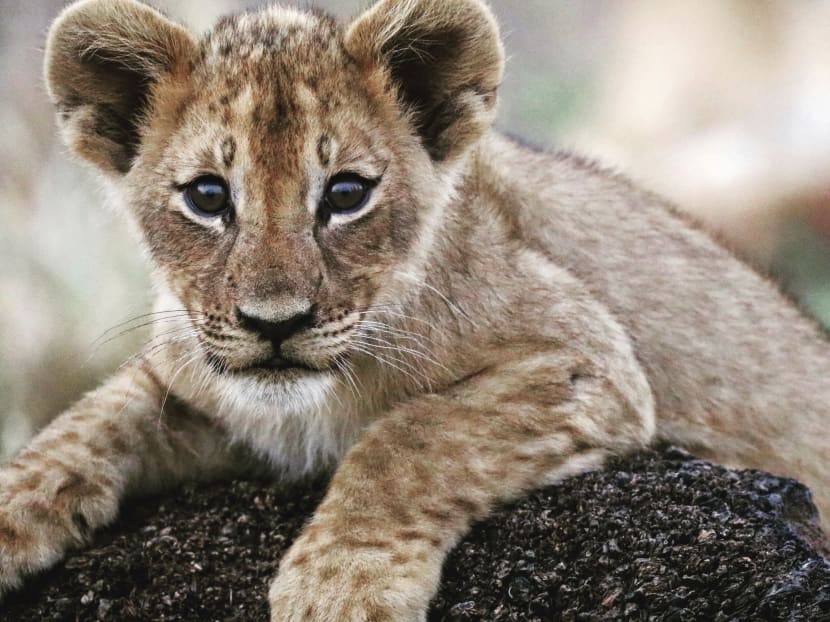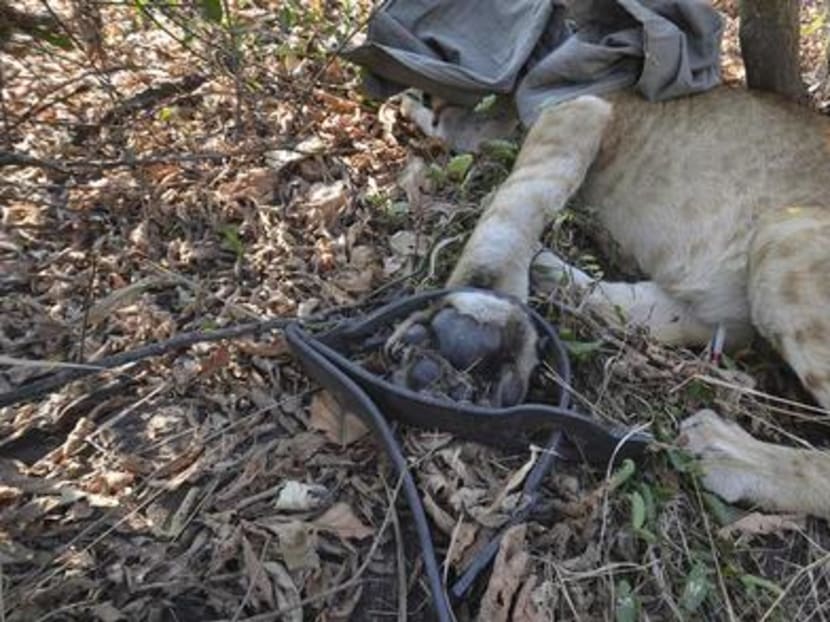Maimed lions show challenges of recovery in Mozambican park
GORONGOSA NATIONAL PARK (Mozambique) — They are amputees, lions that lost paws to wire snares or metal-jaw traps set by poachers.

In this photo supplied by Gorongosa Lion Project a three-month-old lion cub is shown in this photograph taken in Gorongosa National Park in Mozambique. Photo: Paola Bouley/Gorogosa Lion Project/AP
GORONGOSA NATIONAL PARK (Mozambique) — They are amputees, lions that lost paws to wire snares or metal-jaw traps set by poachers.
The 10 or so maimed carnivores represent one-sixth of the lions currently monitored in this flagship national park. These survivors, rescued, treated and released by park staff, highlight the pressures of rebuilding a lion population that was almost wiped out during a civil war that ended in 1992.
It is one of conservation’s more dramatic stories in Africa, where many lion populations are dwindling as a growing human presence pushes into wild areas.
The lions are usually not even the intended target of illegal hunters who want to catch antelopes and other animals for meat in a poor region shadowed by lingering conflict between old civil war foes.
The ones that survive the loss of a limb still mate and hunt, although most become solitary and the females struggle to raise cubs, partly because they are prone to getting infected during the stressful period of lactation. Healthy lions sometimes even attack maimed ones.
There were once an estimated 200 lions in Gorongosa, then fewer than 10 after the war. Traps killed seven lions early this year, but at least 14 cubs have been born since June, and 11 have survived until now.

“One in three of our lions have been hit” by poachers’ traps, said Ms Paola Bouley, who co-founded the Gorongosa Lion Project in 2012. “We’ve responded successfully to most of them. But we’ve lost a bunch of lions.”
The challenges of monitoring lions were evident one morning as Ms Bouley nudged her four-wheel drive vehicle — she calls it driving “by feeling” — through tall grass, tracking signals from a GPS collar on a healthy lion named Flavia. Eventually, Flavia was glimpsed walking and settling under a tree, though her three cubs were not in sight.
As Ms Bouley prepared to leave, her vehicle got stuck in a hole probably used by resting warthogs. Colleagues in another vehicle clapped their hands to ward off Flavia while Ms Bouley’s passengers hurriedly got out to push. Fortunately, Flavia kept her distance.
Just 15 per cent of the Gorongosa park’s 4,067 square kilometres, which include grasslands, forest and a large mountain, are accessible by road. Still, GPS collars fitted onto some lions transmit their whereabouts every few hours, and anti-poaching teams can respond quickly to unusual data. For example, no movement for a while could mean a lion is caught in a snare.
This year, newly trained scouts at Gorongosa found 9,200 wire snares and 245 spring-operated “gin traps”, and almost 400 poachers have been caught, according to Dr Rui Branco, the park’s head of law enforcement.
Convicted poachers can be fined and jailed, and new legal reforms will make it easier to target trap manufacturers and traffickers higher up in the poaching chain, Dr Branco said. Judges have visited Gorongosa to learn more about poaching, he said.
Drought and tensions between the government of the ruling Frelimo party and Renamo, the main opposition group with a base in the Gorongosa region in central Mozambique, have deepened hardship for nearly 200,000 people around the park.
But various projects are underway to help the community, and the park brings in neighbouring children for tours and educates them about lions and their role in generating tourism income. This year, the park hosted a ceremony at which local chiefs bestowed names — Tambarare, Muanadimae and Mafambisse — on new cubs.
Gorongosa’s lions drew tourists during the Portuguese colonial rule that ended in 1975. A park landmark is the “lion house”, an abandoned camp building that lions sometimes climbed, possibly to scan the plain for prey. The lions’ numbers plummeted during the slaughter of animals by armed factions and others during the civil war.
More data is needed to confirm that the recovery of the park’s lions, which have an abundance of prey to hunt now that some wildlife populations are increasing again, is on solid footing.
“Saving lions across the continent is more and more about tackling tough issues like food insecurity and poverty and local governance,” Ms Bouley wrote in an email this week. “And that’s everything we are taking on in Gorongosa.” AP





